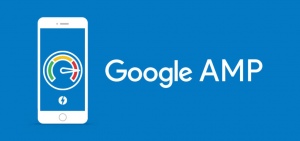 Almost a year ago Google announced one of the most ambitious and yet totally predictable evolutions of its software line-up. Dubbed Knowledge Graph, the new approach to search is an algorithm model focused on organising information both by how users interact with it and by your own search pattern. It allows Google to discern between different things that bear the same name and provide you with precisely the information that you are searching for. There is also a link-up of various concepts and objects that make the Knowledge graph an actual web-like representation of inter-linking concepts. Most importantly not only does the information behind the concept come from databases and Google-trusted sources like the CIA world Factbook but also from real time searches and clickthroughs off SERPs. This all feels a lot like semantic search, something on top of Google’s list. The constant Google push for a more semantic search engine has been well stated and semantic interpretation has been fully implemented in other Google products like adsense.
Almost a year ago Google announced one of the most ambitious and yet totally predictable evolutions of its software line-up. Dubbed Knowledge Graph, the new approach to search is an algorithm model focused on organising information both by how users interact with it and by your own search pattern. It allows Google to discern between different things that bear the same name and provide you with precisely the information that you are searching for. There is also a link-up of various concepts and objects that make the Knowledge graph an actual web-like representation of inter-linking concepts. Most importantly not only does the information behind the concept come from databases and Google-trusted sources like the CIA world Factbook but also from real time searches and clickthroughs off SERPs. This all feels a lot like semantic search, something on top of Google’s list. The constant Google push for a more semantic search engine has been well stated and semantic interpretation has been fully implemented in other Google products like adsense.
And yet how has Knowledge Graph affected search and how has it changed in the last year? Well, when the search addition was first unveiled it was rather basic, something that maybe one of the best SEO agency strategy architects could leverage for some basic traffic increases. Nowadays you can see Knowledge graph being put to good use by Google and users alike.
First of all, the page layout changes for SERPS that Google rolled out to back Knowledge Graph have evolved quite a bit. Products with Google+ page links now have directly embedded profile redirects in the side-bar box. This serves both marketers and Google. For the former it provides a quick link to a product social media page that potential customers can use to find out more about a product if they’re unsure about clicking through to the homepage. For Google it provides more incentive for companies to man their product pages (and Google+ has been having some problems with getting the same kind of company love as Facebook and Twitter lately) and a lot of use.
Secondly the sidebar display that is the result of the Google knowledge graph offers quite a bit of localized integration, for instance offering nearby buying solutions for the product you are searching for or links to nearby places associated with the target of your query. It is also extremely good for marketing programs as it basically does the whole association part of project marketing research on its own by showing you what other products or concepts are associated with the one you are researching, both conceptually and as a parameter of the usual search patterns.
The Knowledge Graph has integrated seamlessly with the rest of the Google architecture in the past few years and it looks like it can also bring important contributions both to user search ease and functionality and to marketers and SEOs who can use it to their advantage.







